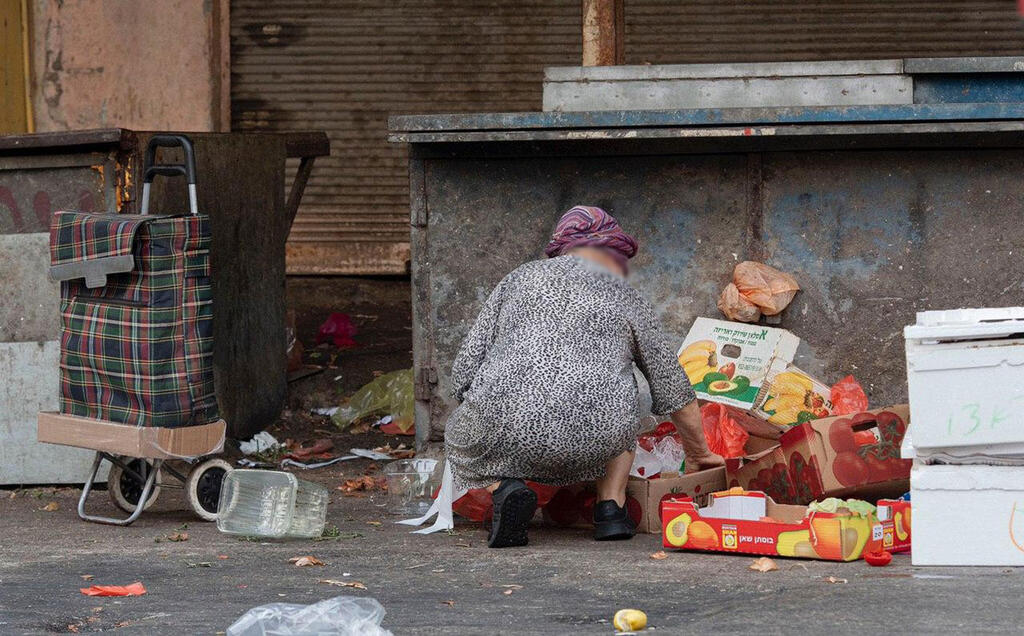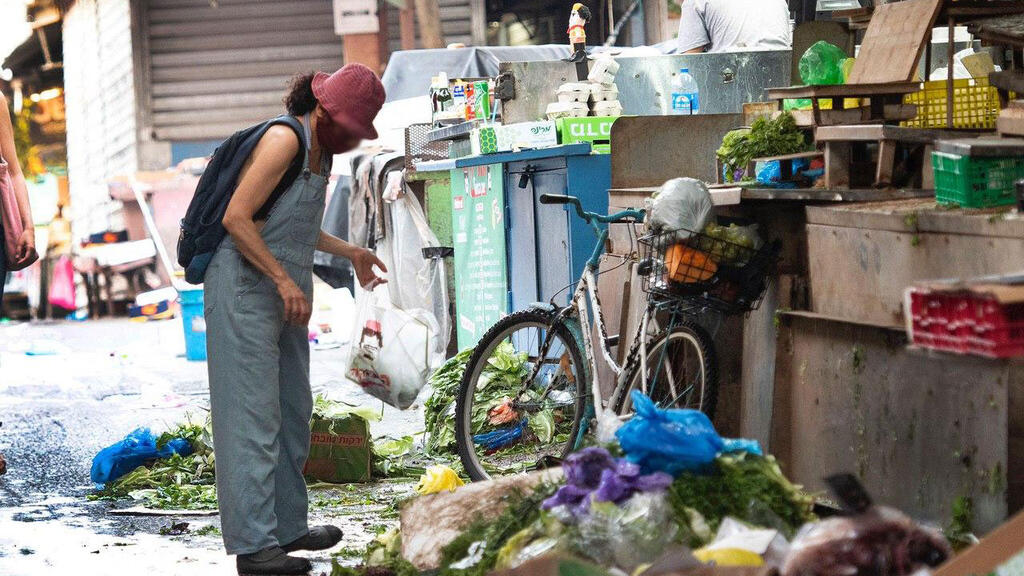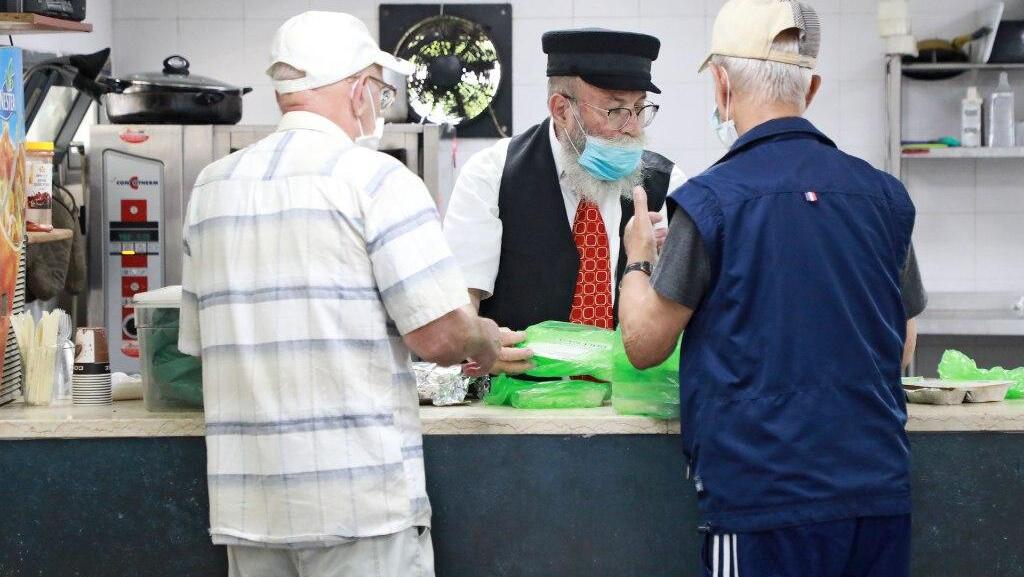The COVID-19 pandemic and the economic crisis that followed exacerbated the country’s national poverty rate significantly in the past year, with one in every five Israelis now living in poverty, said a new report published Wednesday.
According to Israel’s National Insurance Institute report, about 22% of Israel's population lives in poverty, mainly due to government’s decision to cancel all COVID-induced aid packages it had provided to the public during the onset of the pandemic in 2020.
4 View gallery


An elderly woman looking for food in Tel Aviv amid the COVID pandemic
(Photo: Nadav Abas)
The report further estimates that the poverty rate among children has also risen in 2021, and now stands at 31.2% compared to 29.2% during the previous year.
The report also shows that those most affected by the ongoing COVID crisis were the labor market's weaker sectors, whose wages were low even before the virus outbreak in the country.
And while economic growth has been much improved in 2021 compared to 2020 - mainly due to the lack of lockdowns and crippling restrictions - it did not affect all populations equally, according to the National Insurance Institute.
"The government's policy, especially the decision to stop all unemployment benefits, has led to an increase in the poverty rate among the population in 2021 compared to the year before,” the report says.
4 View gallery


A woman looking for food in Tel Aviv's Carmel Market during the COVID pandemic
(Photo: Nadav Abas)
According to the report, despite constant closures and an increase in unemployment, government assistance saw the national poverty rate drop considerably between 2019 and 2020.
The poverty rate was reduced among needy families from 21.2% to 20.4%; among impoverished children from 29.2% to 28.7%; and among the elderly from 15.8% to 13.5%.
The report added, however, the quality of living in the country rose by 2.4% in 2020.
Welfare Minister Meir Cohen responded to the report: "The most striking thing in the report shows that when the state intervenes and has a welfare policy, it helps weak populations and gets them out of poverty.
“The report clarifies to me that the steps taken in favor of the weak populations will be reflected and will, in effect, lift weak populations from poverty,” added Cohen.
The poverty line for 2020 was classified as monthly income of NIS 2,811 for one individual. A family of two is considered poor if its income is lower than NIS 5,623. A couple with a child is considered poor if they earn less than NIS 7,450 and a family with two parents and three children will be considered poor if their income is less than NIS 10,543 a month.



